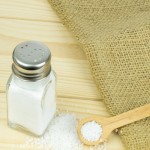The Salty Details

I have to admit it, I crave salty foods far more often than sweet ones. And while salt did not work out so well for Lot’s wife (see Genesis 19:26), it has always put a smile on my face!
Growing up, the only salt option was table salt, which was typically iodized to prevent goiter (enlargement of the thyroid gland in front of the neck), which was a problematic issue back in the day. Today, as with most edible items for sale, there are numerous salt varieties to choose from. But is there really much difference—apart from taste? Is one salt healthier than another?
The answer to both (of my own) questions is “No”. Table salt and sea salt are both comprised of sodium and chloride. That said; because sea salt’s particles are larger, you may find you experience a better “salt lick” effect when you use this salt variety because the grains can linger on your tongue a bit longer.
In terms of health, regardless of the type of salt you ingest, sodium needs to be reined in to protect against rising blood pressure. The American Heart Association recommends limiting sodium intake to 2,300 mg/day (=1 tsp/day) for healthy individuals and 1,500 mg/day (approximately 2/3 tsp) for those who have high blood pressure—even if their blood pressure is controlled with medications.
Whether you have high blood pressure or not, you likely need to cut back on your salt intake as it’s been found that most Americans actually eat twice the recommended amount each day!
Here are three ways to scale back on the sodium you ingest:
- Significantly limit your consumption of fast foods, canned soups, and pre-packaged meals. These each contain a mother lode of salt!
- When dining out, ask for low sodium options or meal preparation.
- Pump up the flavors of the foods you do prepare. Adding the zest of citrus fruit, chopped fresh herbs, and dried seasonings such as cumin, curry, and black or red pepper can give your taste buds the thrill they seek—without all that harmful sodium.